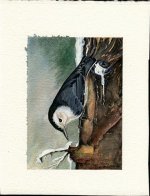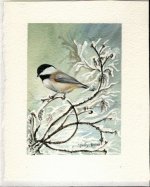nightheron28
Exterminate! Exterminate! Exxxtttteeeerrrrmmmiinat
Hello,
Was wondering if there is a book or a class I can take to learn to more effectively take a sketch to a painting. It seems that I dont get enough details in my quick sketches to produce a finished painting that I am happy with. It is hard for me to visualize how feathers should lay or look in a certain position so as to keep the bird looking natural.
I have looked at John Bubsy's book on Drawing Birds, but I find it lacking, it seems it is more inspirational than instructional. Although he himself is a wonderful and powerful artist who I respect (in case hes on this board reading this, I really do think you are remarkable, just didnt find your book that helpful). He just kind of says practise, well I dont need a $30 book to tell me that, and practise helps to a certain extent, but I think one needs technique as well and if your not developing a technique or talented enough to develop a uniqe technique to help you paint well then what do you do? You usually look for quidance from others who seem to excell in this area.
Thanks for any suggestions.
Was wondering if there is a book or a class I can take to learn to more effectively take a sketch to a painting. It seems that I dont get enough details in my quick sketches to produce a finished painting that I am happy with. It is hard for me to visualize how feathers should lay or look in a certain position so as to keep the bird looking natural.
I have looked at John Bubsy's book on Drawing Birds, but I find it lacking, it seems it is more inspirational than instructional. Although he himself is a wonderful and powerful artist who I respect (in case hes on this board reading this, I really do think you are remarkable, just didnt find your book that helpful). He just kind of says practise, well I dont need a $30 book to tell me that, and practise helps to a certain extent, but I think one needs technique as well and if your not developing a technique or talented enough to develop a uniqe technique to help you paint well then what do you do? You usually look for quidance from others who seem to excell in this area.
Thanks for any suggestions.





